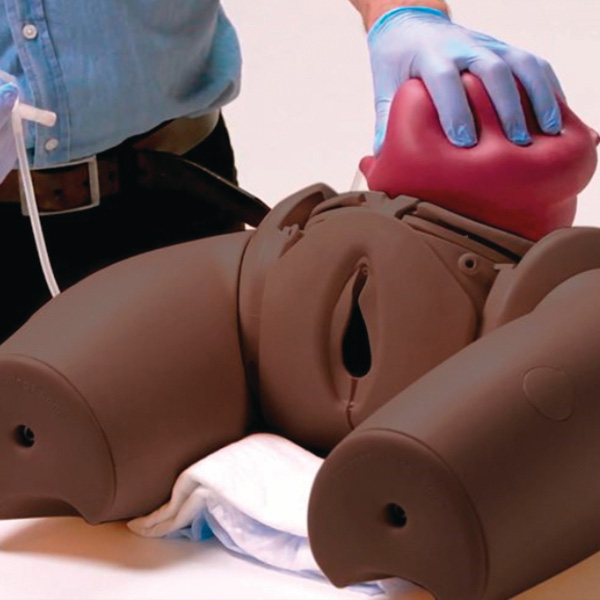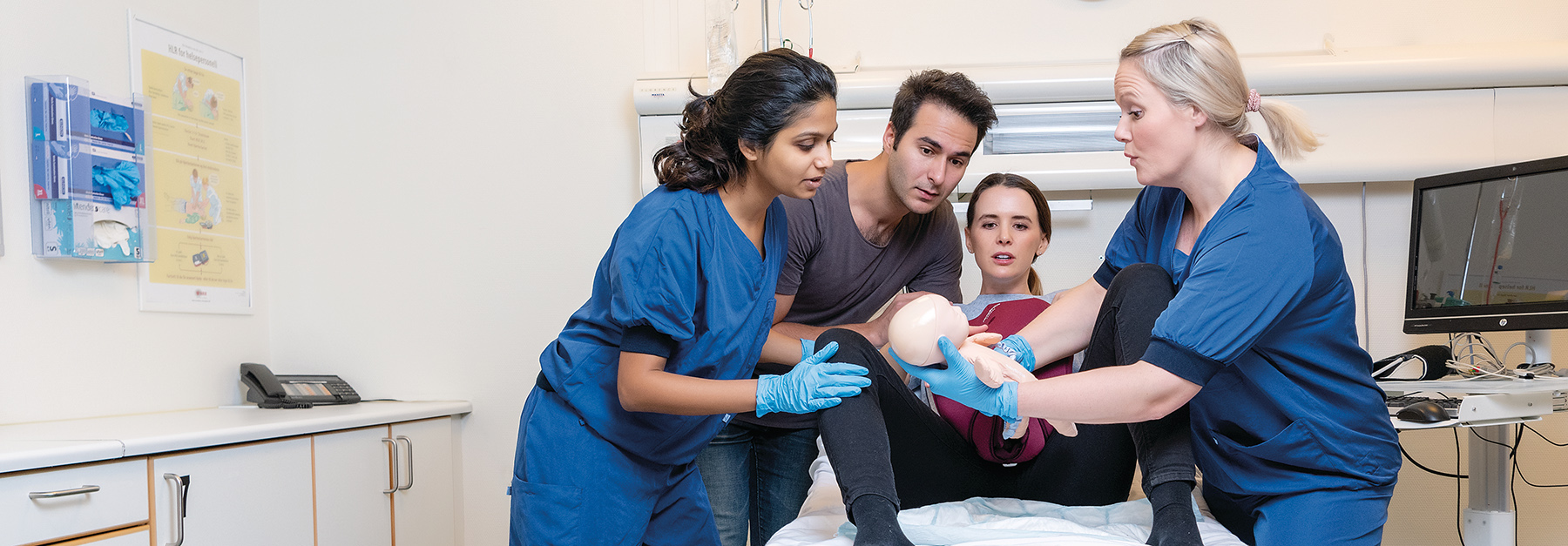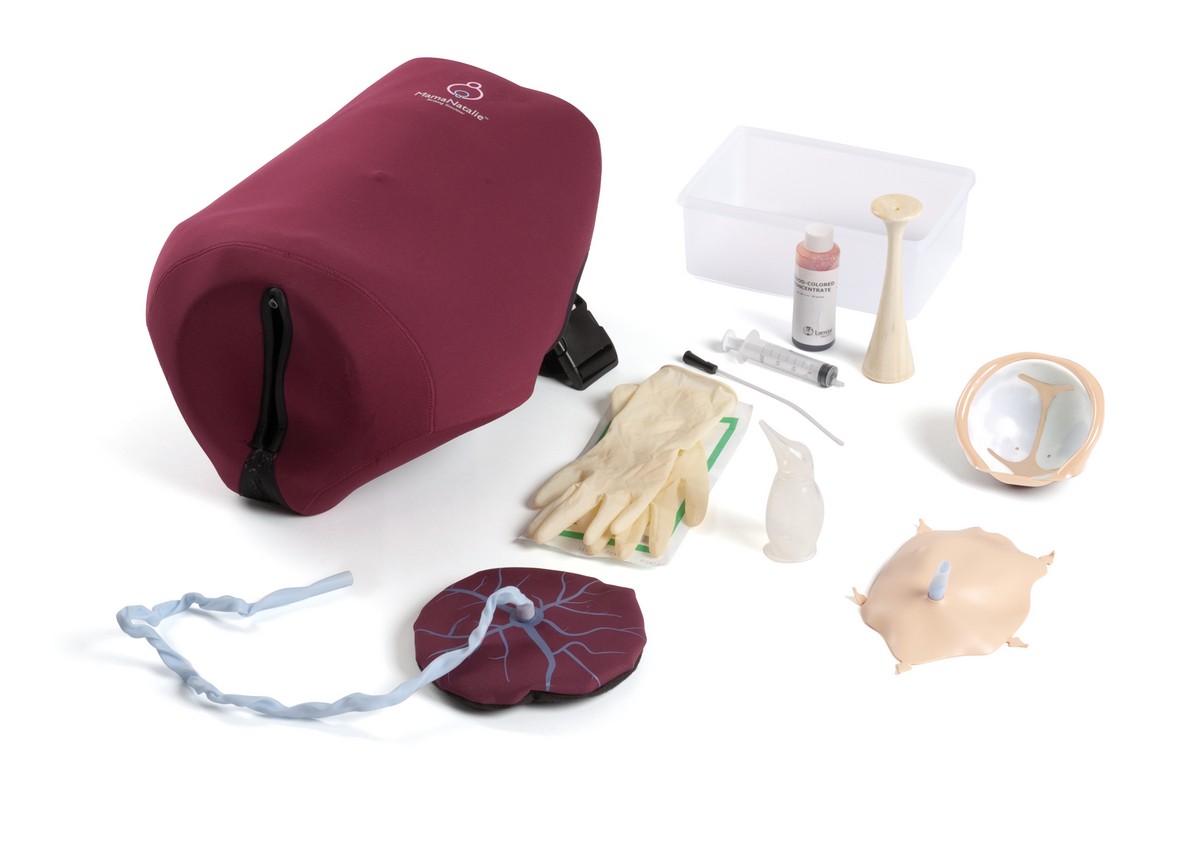Choosing the Right Level of Fidelity for Your Simulation Training
Recreating the Reality of Birth
The "see one, do one" approach to learning can be especially challenging for trainees in labor and delivery. Caring for two patients, the mother and the baby, creates double the possibility for complications and requires double the amount of patient monitoring. The learning curve in labor and delivery can be a never-ending one, and simulation is being used to prepare clinicians for low frequency, high risk events.
Simulation practice can help to address risk and other concerns surrounding maternal care. The wide variety of simulation fidelity options (options for approximating reality) gives educators an array of tools to support experiential learning at all levels, from simple task trainers to sophisticated full-body manikins.
In this article, we examine a range of simulation methods. Building on expert observations, we share how each can support the needs of your learners and help reduce risk in maternal and newborn care.
Methods discussed include:
- Task Trainers
- Standardized Patients (SPs)
- Hybrid Simulation
- High Fidelity Simulators
![]()
of obstetrics/gynecology professionals have been sued at least once, and they have one of the highest malpractice insurance rates of any medical profession.1
The Doctor’s Company, a national physician-owned medical malpractice insurer, recommends considering multidisciplinary simulation drills for:2
- Maternal hemorrhage
- Respiratory arrest in mother and newborn
- Shoulder dystocia
- Placental abruptions
- Ruptured uterus
- Other unexpected complications
Task Trainers: Practice Makes Permanent
Using a task trainer, students receive hands-on practice performing psychomotor skills independently and at their own pace. Typically, the focus of task trainers will be on one specific task, such as pelvic exams or umbilical catheterization.
John's Hopkins Medicine cites proper patient care as one primary benefit of task trainers.4 "It is understood that clinicians-in-training will treat patients; however, from an ethical perspective, harm to patients as a byproduct of training or lack of experience is justified only after maximizing approaches that do not put patients at risk".5 Task trainers help by providing you with the ability to confirm that learners have, in fact, mastered a skill before allowing them to perform on real patients.
Benefits
- Allows for hands-on, repeated practice
- Standardization of skills practice
- Portability
- Increased skills proficiency with no harm to patients
Things to Consider
- Limited opportunity for interaction feedback
- Decreased suspension of disbelief
In a study evaluating the training of shoulder dystocia using a birthing simulator, learners saw a forty-four percent improvement in the mean scoring of their emergency procedure, including:3
- Assessment
- Call for help
- Positioning
- Suprapubic pressure
- Episiotomy assessment
- Internal rotation
- Delivery of posterior arm
There was also a trend showing reduction in peak force used and a shorter delivery duration following the training.
At a lower price-point, task trainers in isolation may exponentially increase learner comprehension. If your learners require clinical attention to detail and hands-on, repetitive practice, a task trainer might be your saving grace.
Standardized Patients: Real People, Real Interaction
Realistically portraying a scenario, SPs interact with learners to create a low-risk learning experience. SPs can verbalize symptoms, communicate what they are physically experiencing, and even play the part of family members, which can be useful in gathering patient history and diagnosing symptoms.
Benefits
- Assists students in developing communication skills as well as clinical proficiency
- Creates the opportunity to read the patient’s body language
- Helpful in the diagnostic process
- Assists students in working through difficult emotional situations in a safe environment
Things to Consider
- SPs must be recruited and trained, extending the lead time necessary for planning and executing a simulation
- Difficulty maintaining consistency
- Cannot be used for complex physiological monitoring
SPs allow learners to practice communication skills, establishing what questions need to be asked or how to relay bad news. Allowing the opportunity to recall didactic lessons and put acquired knowledge into action may lead to higher levels of engagement and self-awareness for learners. If you are interested in facilitating an engaging learning process, using a standardized patient may be a great place to start.
Hybrid Simulation: Bridging the Gap
Hybrid simulation is when two or more simulation modalities are used in the same simulation session. This form of simulation offers a bridge between simulation methods in that learners can work with real patient and perform clinical skills. Typically, a task trainer or partial simulator is realistically affixed to a SP, allowing for teaching and assessment of technical and communication skills in an integrated fashion.7

What Students Say about Hybrid Simulation
"It puts you closer to a real-life situation – need more of it!"
"Actors made the simulation more realistic and required you to think critically"
"The delivery progressed more naturally, and hands-on experience is always better than lecture"6
Benefits
- Helps students develop communication skills and clinical practice
- Provides a life-like experience for the student
- Ability to simulate some invasive procedures
- Allows students to evaluate body language
Things to Consider
- SPs must be recruited and trained, extending the lead time necessary for planning and executing a simulation scenario
- Equipment maintenance in addition to training SP
- Attention needed to maintain consistency
- Cannot be used for complex physiological monitoring
The use of a SP and birthing simulator may be able to effectively teach the complexities associated with birth, while ensuring that learners communicate and monitor the patient as well. The interaction with a "real" patient combined with hands-on clinical practice can reinforce competent decision making and develop critical thinking skills. Learners can then apply these skills to actual patient encounters, confidently ascertaining the best course of treatment.
To help learners develop their decision-making competency, you may want to consider expanding your simulations to incorporate both standardized patients and task trainers.
Simulators: Optimizing Fidelity
Simulators are particularly well-suited for simulations involving traumatic or emergency scenarios. Obstetrics is a key area where manikins have been instrumental in simulating emergencies during labor and delivery. Due to the nature of the emergencies and patient age, educators count on manikins to provide a realistic physiology where SPs cannot.8
Simulation with a simulator can provide learners with the ability to practice simulation in teams, reacting to physiological changes in real time, and rehearsing real world scenarios.
Benefits
- Consistent, easy repeatability allows learners to develop precise behaviors and skills that match your goals
- Results can be measured for immediate feedback
- Ability to perform invasive procedures
Things to Consider
- The best gains come when there is a commitment to simulation as a preparatory process for clinical practice
- Leaders will achieve the best results by having a strong basis in how to use high fidelity simulation to meet their training objectives
- Gains can be maximized, and costs often reduced by conducting simulations in situ, i.e. at the actual point of care location
The capability for weighing and enacting a clinical pathway is one thing that other methods of simulation cannot deliver. Use of a simulator allows for administration of medication and physiological monitoring, so that learners can grasp the reality of their actions. Additionally, scenarios allow for evidence-based decision making, using clinical procedure in tandem with real human factors and behaviors.
With the right technology and environment, learners can work to develop and hone a skill until they’ve mastered it — without concern for real patient harm. If you feel your learners are ready to take part in full-fledged, high-fidelity simulation, your next steps may lead to a simulator.
The Right Fidelity for the Job
When considering the best option, it comes down to identifying your desired educational outcome and understanding which model would best achieve your goal.
At Laerdal, our clients appreciate when we remind them that simulation is not about the simulator. In a study measuring the effectiveness of multi-professional training for eclampsia, local hospitals used SPs in lower-fidelity simulation and a regional simulation center used a high-fidelity, full-body simulator.According to the British Journal of Midwifery, "there were equal improvements in both settings; it was the training itself, rather than the location or the simulation equipment used, that appeared to be the key to success". 8
Task trainers, standardized patients, hybrid simulation, and manikins have all proven to be enduring and invaluable training tools. Regardless of the choice you make, you may improve your team's skill levels so that they are better-prepared when real patient lives are at stake.
Helping You Succeed

References
- Adinma, J. (2016). Litigations and the obstetrician in clinical practice. Annals of Medical and Health Sciences Research, 6(2); 74-79. doi: 10.4103/2141-9248.181847
- The Doctor's Company. (2017). Tips for reducing medical malpractice claims in obstetrics. Retrieved from http://www.thedoctors.com/ KnowledgeCenter/PatientSafety/articles/Tips-for-Reducing-Medical-Malpractice-Claims-in-Obstetrics
- Fialkow, M.F., Adams, C.R., Carranza, L., Golden, S.J., Benedetti, T.J., & Fernandez, R. (2014). An in situ standardized patient based simulation to train postpartum hemorrhage and team skills on a labor and delivery unit. Simulation in Healthcare: The Journal of the Society for Simulation in Healthcare, 9(1): 65-71. doi:10.1097/SIH.0000000000000007
- John's Hopkins Medicine. (n.d.). Partial task models. Retrieved from http://www.hopkinsmedicine.org/simulation_center/training/manikinbased_simulations/partial_task_models.html
- Ibid
- Laerdal Medical. (n.d.). Hybrid simulation for labor and delivery offers greater realism and enhances classroom learning. Retrieved from http:// www.laerdal.com/distributors/UserStories/48118055/Hybrid-simulation-for-labor-and-delivery-offers-greater-realism-and-enhances-classroom
- Lopreiato, J.O. (2016). Healthcare simulation: Dictionary. Rockville, MD: Agency for Healthcare Research and Quality
- Abersold, M. & Tschannen, D. (2013). Simulation in nursing practice: The impact on patient care. OJIN: The Online Journal of Issues in Nursing, 18(2): Manuscript 6. doi: 10.3912/OJIN.Vol18No02Man06
- Crofts, J.F., Winter, C., & Sowter, M.C. (See ref #4)
Want more content like this?
Sign up for Laerdal Medical email updates. You can identify your interests and receive new educational content, updates, event information and more.

